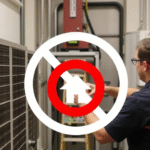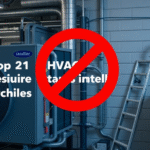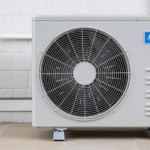L & I Refrigeration Sold to Private Fund—Implications for the Industry
The recent sale of L & I Refrigeration to a private fund has sparked considerable interest within the refrigeration and HVAC (heating, ventilation, and air conditioning) sectors. This move indicates ongoing changes in the market landscape, emphasizing the growing trend of private equity involvement in the industry. As we explore the implications of this transaction, it’s essential to understand what it means for businesses, consumers, and the future of refrigeration technologies.
Industry experts suggest that the acquisition could lead to significant strategic shifts in L & I Refrigeration’s operations. Private funds often look for opportunities to streamline operations and enhance efficiency. This could result in the introduction of new processes or technologies that can improve service delivery. Here are some potential implications:
- Increased Investment: Expect to see increased capital injection into L & I Refrigeration. This funding can enhance research and development, leading to the advancement of sustainable refrigeration technologies. With the pressing need for eco-friendly solutions, this could position the company favorably within the industry.
- Market Expansion: The acquisition may facilitate expansion into new geographic markets. The private fund might leverage its network to help L & I Refrigeration tap into regions previously outside its reach. This could diversify the company’s offerings and attract a broader customer base.
- Focus on Innovation: With new resources, L & I Refrigeration could accelerate its innovation efforts. This may include more robust research on energy-efficient systems or exploring alternative refrigerants that comply with environmental standards.
- Enhanced Competition: The injection of fresh capital and ideas may elevate competition within the refrigeration sector. Competitors might be pressured to enhance their offerings, resulting in a better market for consumers.
Private equity involvement in the refrigeration industry is not unprecedented. In fact, numerous companies have benefited from similar acquisitions in recent years. You may want to look at similar cases where private funds have invested in related sectors, such as HVAC.com for insights on market trends.
In addition, the acquisition could foster better supply chain relationships. L & I Refrigeration may negotiate favorable terms with suppliers due to the financial backing of its new parent fund. Stronger supplier relationships can lead to cost reductions and improvements in material sourcing, directly benefiting end consumers through more competitive pricing.
As L & I Refrigeration adjusts to its new ownership, it’s crucial for stakeholders—employees, clients, and suppliers—to stay informed about any operational changes. Communication will be key during this transition period, and transparency with all parties will help create a smoother integration process.
Let’s consider a few key factors at play in the industry as a whole, following L & I Refrigeration’s acquisition:
| Factor | Potential Impact |
|---|---|
| Private Equity Trends | Increased consolidation and resource allocation in the market. |
| Technological Advancements | Rapid adoption of sustainable practices and innovative cooling systems. |
| Market Demand | Escalating demand for energy-efficient solutions to combat climate change. |
| Consumer Awareness | Growing knowledge about refrigeration impacts may drive shifts in purchasing habits. |
This acquisition also highlights the necessity for companies in the refrigeration industry to adapt and innovate continuously. As consumer preferences shift towards sustainability, companies like L & I Refrigeration that invest in eco-friendly technologies may lead the way in setting new industry standards.
For those interested in the long-term impact of private fund investments in the refrigeration and HVAC sectors, the transaction presents an essential case study. Keep an eye on how it unfolds, as these developments will likely reshape the industry landscape.
As we analyze these trends, additional resources such as The ACHR News can provide updates on industry movements that relate to M&A activities and technological advancements. Following influential publications will keep you informed about how companies navigate these changes and what new opportunities may arise in the future within the refrigeration sector.
Key Trends in the Refrigeration Market Post-M&A
The refrigeration market is witnessing significant transformation as mergers and acquisitions (M&A) reshape its landscape. The recent sale of L & I Refrigeration to a private fund marks a pivotal point, driving key trends that are influencing operations, investments, and innovations. Understanding these trends is essential for stakeholders looking to navigate this dynamic environment effectively.
One of the foremost trends emerging from the recent M&A activities is a heightened focus on sustainability. Companies are increasingly investing in environmentally friendly technologies. As refrigeration plays a critical role in energy consumption, stakeholders are looking for solutions that minimize their carbon footprint. Innovations such as natural refrigerants and energy-efficient systems are gaining traction. For instance, the adoption of [CO2-based refrigeration systems](https://www.ahrinet.org/) is seen as a viable alternative that meets regulatory demands while enhancing efficiency.
Another trend catalyzed by M&A in the refrigeration sector is the integration of smart technologies. As firms merge, the combined expertise often accelerates the development of smart refrigeration solutions. This includes IoT-enabled systems that allow for real-time monitoring and optimization of refrigeration processes. The ability to collect and analyze data helps businesses enhance efficiency, reduce waste, and predict maintenance needs, which dramatically cuts operational costs.
Furthermore, consumer demand for transparency and traceability in food supply chains is reshaping refrigeration approaches. Businesses recognize that stakeholders expect to know how and where their food is stored. This trend pushes companies to adopt advanced tracking technologies, ensuring compliance with health and safety regulations while also promoting consumer confidence.
As M&A activities cause players to reevaluate their strategies, there is an increased emphasis on diversification of services. Refrigeration firms are expanding their service offerings to include installation, maintenance, and energy management solutions. This trend provides customers with comprehensive support and ensures that refrigerant leaks or equipment failures can be swiftly addressed, thereby reducing potential losses.
Investment in research and development (R&D) is also a significant trend post-M&A. Companies that were previously competitors may now collaborate to pool resources and expertise, aiming to innovate faster. This investment leads to advancements in freezer and cooler technologies, ensuring that refrigeration systems are more effective and reliable.
In addition to technology advancements, regulatory changes play a vital role in shaping the refrigeration market. Extended mandates aimed at reducing greenhouse gas emissions are pushing companies to adapt their systems. Compliance with evolving regulations can be complex, but firms that stay ahead of these changes may find competitive advantages. Adapting to regulations like the EPA’s SNAP program helps businesses reduce liabilities and improve their market position.
Furthermore, workforce development is a crucial trend as the refrigeration industry faces a skilled labor shortage. As companies merge, there is often a focus on training and upskilling employees. Investing in the workforce ensures that technicians are well-versed in modern technologies and practices. This commitment to training ultimately benefits businesses and customers alike, leading to enhanced service quality.
To visualize these trends, here’s a concise table summarizing the key points:
| Trend | Description |
|---|---|
| Sustainability | Increased investment in eco-friendly technologies, like natural refrigerants. |
| Smart Technologies | Integration of IoT for real-time monitoring and efficiency. |
| Consumer Transparency | Enhanced tracking and compliance solutions in food supply chains. |
| Diversification | Comprehensive service offerings beyond just refrigeration equipment. |
| R&D Investment | Collaborative innovation between merged companies. |
| Regulatory Compliance | Adaptation to changing laws for environmental safety. |
| Workforce Development | Investment in technician training to address skill gaps. |
The M&A activity, particularly the sale of L & I Refrigeration, heralds exciting developments in the refrigeration industry. By capitalizing on these trends, companies can enhance their operational efficiencies, comply with regulatory frameworks, and remain competitive in an evolving market. As you consider opportunities within the refrigeration space, staying informed about these trends will be essential for making strategic decisions that align with both current demands and future growth.
Financial Strategies Behind the Acquisition of L & I Refrigeration
The recent acquisition of L & I Refrigeration by a private fund marks a significant shift within the refrigeration industry. Understanding the financial strategies behind this acquisition can provide insight into market trends and the future landscape of this essential sector. Mergers and acquisitions (M&A) are often driven by various financial motivations, and in the case of L & I Refrigeration, several key strategies may have influenced this decision.
One of the primary financial strategies involves leveraging existing assets. A private fund can analyze L & I Refrigeration’s asset portfolio, including equipment, intellectual property, and real estate, to determine how these assets can be optimized for greater profitability. The goal is to enhance operational efficiency, which may lead to a reduction in operational costs. By using advanced strategies in asset management, the acquiring fund can streamline operations, increase profit margins, and ultimately maximize shareholder value.
Furthermore, industry consolidation is another factor at play. The refrigeration market has seen a trend of consolidations, where companies team up to gain a competitive edge. Through this acquisition, the private fund can gain access to new markets and expand its presence in regions where L & I Refrigeration has established connections. This geographic expansion opens new revenue streams, making the acquisition financially lucrative.
In addition to expansion, there may be a strong focus on cost synergy. By merging L & I Refrigeration with existing portfolio companies, the private fund may achieve economies of scale. This scenario can lead to shared services, negotiated bulk purchasing, and reduced overhead costs. Each of these factors contributes significantly to the overall cost structure, allowing for an enhanced bottom line.
Another important financial strategy behind the acquisition is the evaluation of growth potential through innovation. The private fund likely sees opportunities for L & I Refrigeration to innovate existing product lines or develop new technologies. Investments in research and development can yield high returns, particularly in an industry that values efficiency and sustainability. The push towards greener technologies and energy-efficient systems in refrigeration can facilitate L & I’s transition into new markets, catering to businesses looking to reduce their carbon footprint.
Risk assessment and management also play critical roles in the acquisition process. By conducting thorough due diligence before finalizing the deal, the private fund can identify potential risks associated with L & I Refrigeration. This assessment includes analyzing financial records, market conditions, customer loyalty, and competitive positioning. Addressing these risks early can safeguard against unforeseen financial setbacks in the future.
Moreover, financing structures further support the acquisition. Private funds typically engage in a combination of equity and debt financing to fund acquisitions. An optimal balance can minimize costs and provide the necessary capital for operational improvements. The choice of financing method can ultimately influence the return on investment (ROI) and the overall success of the acquisition.
It’s also important to consider the long-term projections for the refrigeration industry. As demand for temperature-controlled logistics continues to rise—especially in sectors such as food and pharmaceuticals—the acquisition of L & I Refrigeration positions the private fund to capitalize on emerging trends. This foresight in market dynamics reflects a broader understanding of industry shifts, making the acquisition a strategic move rather than just a financial transaction.
Below are some critical factors contributing to the strategic financial overview of the acquisition:
| Factors | Description |
|---|---|
| Asset Leverage | Maximizing efficiency of L & I Refrigeration’s existing assets. |
| Market Expansion | Gaining access to new and emerging markets. |
| Cost Synergies | Achieving economies of scale through operational consolidation. |
| Innovation Drive | Investing in R&D for competitive advantage. |
| Risk Management | Conducting due diligence to identify and mitigate risks. |
| Financing Options | Utilizing a mix of equity and debt for funding acquisition. |
The acquisition of L & I Refrigeration by the private fund illustrates the complexity of financial strategies at play within the M&A landscape. Each of these strategies uniquely contributes to the overarching goal of driving profitability and ensuring long-term success in the competitive refrigeration industry. For further insights into merger strategies and market analysis, the Mergers & Acquisitions website provides comprehensive resources.
To explore more about the refrigeration industry and its trends, the Refrigeration industry portal offers a wealth of information. Staying updated with these changes can help stakeholders make informed decisions in this rapidly evolving market.
The Impact of Private Equity on Operational Efficiency in Refrigeration
The changing landscape of the refrigeration industry has captured the attention of many investors, particularly private equity firms. The recent trend of private equity firms acquiring refrigeration companies signifies a shift aimed at enhancing operational efficiency. Understanding how private equity impacts operational efficiency is crucial for businesses, stakeholders, and industry enthusiasts.
Understanding the Role of Private Equity
Private equity refers to investments in private companies or buyouts of public companies with the intent of delisting them from public stock exchanges. In the refrigeration sector, these investments often bring not only capital but also strategic direction and expertise. By leveraging extensive resources and experience, private equity firms can streamline operations, reduce costs, and foster innovation.
Operational Efficiency Gains
When private equity firms acquire refrigeration companies, they often implement several operational changes that enhance efficiency:
- Increased Investment in Technology: Many private equity firms prioritize the adoption of advanced technologies, such as IoT devices and AI analytics, to optimize operational processes.
- Process Reengineering: They often rethink existing workflows, seeking to eliminate waste and redundancies, ultimately driving operational efficiency.
- Cost Management: Enhanced financial oversight can lead to better budget management and resource allocation, reducing unnecessary expenditures.
- Workforce Optimization: Training and development programs introduced by private equity can improve employee productivity and morale, boosting overall efficiency.
The Role of Data Analytics
Data plays a significant role in enhancing operational efficiency. With the help of private equity, refrigeration companies have access to sophisticated data analytics tools that facilitate:
- Predictive Maintenance: By analyzing performance data, businesses can anticipate equipment failures, reducing downtime and maintenance costs.
- Energy Efficiency: Data analytics can help monitor energy consumption, identifying areas for savings that improve the bottom line.
- Market Trends: Understanding customer preferences through data allows companies to adapt quickly, ensuring that products meet current demands.
Case Study: L & I Refrigeration
To illustrate the impact of private equity on operational efficiency, let’s look at L & I Refrigeration. After being acquired by a private fund, L & I leveraged significant investments to revamp its operational structure. For instance, they introduced cutting-edge refrigeration management software, which enhanced their maintenance schedules and reduced energy consumption by 30%. This case clearly shows how private equity can catalyze substantial operational improvements.
Challenges and Considerations
While private equity brings many advantages in terms of operational efficiency, companies must navigate some challenges:
- Cultural Shift: The introduction of new practices may disrupt existing workplace culture, necessitating careful change management.
- Short-term Focus vs. Long-term Goals: There might be a pressure to generate quick returns, which can sometimes conflict with longer-term investments in operational improvements.
- Integration Issues: Merging with existing operations needs a strategic plan to ensure a smooth transition without affecting service quality.
Future Outlook
The refrigeration industry is poised for continued evolution as private equity investments grow. Companies can expect a lasting impact on their operational efficiency as these funds drive innovation and the adoption of best practices. As firms continue to seek ways to remain competitive, integrating advanced technologies and leveraging data will remain paramount to success.
Investors and business operators should closely monitor trends in the refrigeration sector to identify opportunities prompted by private equity activity. For further insights into refrigeration and operational efficiency, consider visiting resources like Ice Energy and ACHR News.
Challenges and Opportunities for L & I Refrigeration Under New Ownership
With the recent acquisition of L & I Refrigeration by a private fund, the company stands at a crossroads marked by both challenges and opportunities. Transitioning to new ownership is never easy, especially for a company with longstanding roots in the refrigeration industry. But as L & I Refrigeration embarks on this new journey, understanding these elements will be crucial for its growth and stability in a competitive market.
Key Challenges Ahead
As L & I Refrigeration moves forward under private ownership, several challenges require immediate attention:
- Integration of New Management: New ownership often brings different management styles and strategies. The blending of these can create friction if not handled effectively.
- Employee Morale: Employees may feel uncertain about job security and company direction. Addressing these concerns is vital to maintain productivity.
- Maintaining Customer Satisfaction: Changes in service or product offerings can disrupt existing relationships. L & I must prioritize customer needs to retain loyalty.
- Financial Management: New investors may implement stricter financial goals. Balancing these demands with operational needs can present significant hurdles.
- Market Competition: The refrigeration industry is highly competitive. L & I must innovate continuously to keep up with rivals and changing consumer preferences.
Opportunities for Growth
While challenges are certainly present, this transition also presents numerous opportunities for L & I Refrigeration:
- Access to Capital: Private funds typically provide necessary investments for growth. This influx of capital can lead to new projects and better technology.
- Strategic Rebranding: New ownership is a perfect time to re-evaluate the company’s branding and marketing strategies. Positioning L & I as a leader in innovation can attract new customers.
- Expanding Product Lines: With fresh insights, the company can explore new product offerings that meet evolving market demands, such as energy-efficient systems.
- Increased R&D Opportunities: The additional resources can fuel research and development initiatives that enhance product quality and operational efficiency.
- Collaboration and Partnerships: Engaging with other companies and industries provides avenues for new business ventures, which can broaden L & I’s market reach.
Strategies to Navigate Challenges
To successfully transcend its challenges, L & I Refrigeration can consider implementing the following strategies:
- Effective Communication: Establish clear channels to communicate changes to employees and customers. Transparency fosters trust.
- Employee Engagement: Involve employees in the transition by seeking their input and addressing their concerns. This boosts morale and loyalty.
- Customer Feedback Loop: Implement systems to gather customer feedback regularly. Use insights to adjust services and products promptly.
- Financial Planning: Develop a robust financial plan that aligns with investor goals while remaining realistic about operational costs.
- Continuous Market Research: Stay ahead of industry trends by conducting regular market research. This information will aid in strategic decision-making.
Market Trends Influencing L & I Refrigeration
Understanding broader market trends is essential for L & I Refrigeration to find its footing:
| Trend | Impact |
|---|---|
| Green Technology | Demand for eco-friendly refrigeration solutions is increasing. Companies focusing on this trend can gain a competitive edge. |
| Technological Advancements | The rise of smart refrigeration systems creates opportunities for innovative products that appeal to tech-savvy consumers. |
| Industry Consolidation | Mergers and acquisitions are shaping the competitive landscape, encouraging businesses to position themselves strategically. |
As L & I Refrigeration continues to adapt to its new ownership structure, it is pivotal for them to embrace both the challenges and opportunities that lie ahead. With thoughtful strategies and a focus on innovation, the company can not only survive but thrive in a changing refrigeration landscape. For more insights on recent mergers and acquisitions, visit Crain’s Detroit Business or Refrigerated & Frozen Foods.
The Role of Technology in the Future of Refrigeration Companies
The refrigeration industry is evolving rapidly, fueled by advancements in technology. Companies are adapting to new challenges, incorporating innovative solutions that enhance efficiency and sustainability. As consumer expectations grow, the role of technology in refrigeration will only increase. Let’s explore how technology is reshaping the future of refrigeration companies.
Energy Efficiency and Sustainability
Modern refrigeration systems are designed to be more energy-efficient, reducing operational costs and environmental impact. Technologies such as variable speed compressors and smart thermostats help optimize energy use. Key features include:
- Propane Refrigerants: Using natural refrigerants like propane reduces greenhouse gas emissions.
- Energy Management Systems: These monitor energy consumption, helping companies to minimize usage during peak hours.
- IoT Integrations: Smart devices monitor performance and alert users about potential inefficiencies in real-time.
Smart Refrigeration Solutions
The Internet of Things (IoT) is revolutionizing how refrigeration units operate. By connecting these units to the internet, data can be collected and analyzed to improve performance and reliability. Benefits include:
- Remote Monitoring: Companies can monitor temperatures and performance from anywhere, reducing maintenance costs and downtime.
- Predictive Maintenance: Sensors provide alerts before failures occur, facilitating timely repairs and lowering service costs.
- Data Analytics: Analyzing data from refrigeration systems can lead to strategic decision-making that enhances efficiency.
Automation in Refrigeration
Automation technology streamlines refrigeration processes, enabling better inventory management and enhanced customer service. Here’s how:
- Automated Inventory Systems: Smart refrigeration systems track product quantities, helping businesses manage stock more effectively.
- Self-Service Kiosks: Allowing customers to purchase perishable goods with minimal human interaction improves operational efficiency.
- Robotic Process Automation (RPA): Robotics can assist in product sorting and stocking, leading to faster service and reduced labor costs.
Advanced Technologies Shaping the Industry
Beyond IoT and automation, several advanced technologies are making significant impacts:
- Machine Learning: Algorithms can analyze patterns to enhance predictive maintenance and energy management further.
- Blockchain Technology: Ensures the integrity of the temperature data for perishable goods during transportation, enhancing traceability.
- Augmented and Virtual Reality: Used for training employees, improving safety, and showcasing products to potential customers in innovative ways.
The Importance of Cybersecurity
As refrigeration units become more connected, the need for robust cybersecurity measures increases. Companies must ensure that their systems are protected from potential breaches. Here are some steps that can be taken:
- Regular Software Updates: Keeping firmware and software up-to-date mitigates vulnerabilities.
- Robust Authentication Protocols: Implementing two-factor authentication can make systems harder to breach.
- Cybersecurity Training: Educating employees about potential threats can reduce the risk of attacks.
Market Trends and Future Outlook
The refrigeration market is projected to grow significantly, driven by the demand for sustainable solutions and energy-efficient appliances. Companies that embrace technology will likely lead the industry. According to industry reports, the global refrigeration market is expected to reach [insert relevant financial data] by [insert year]. This growth highlights the need for companies to invest in technology now.
As you consider the advancements in refrigeration technology, it’s essential to follow trusted resources for updated information. Websites like AHRI and ASHRAE provide valuable insights and updates on industry standards and innovations.
Technology will continue to shape the future of refrigeration companies, offering new opportunities for efficiency, sustainability, and customer satisfaction. By staying informed and embracing these advancements, companies can thrive in this competitive landscape.
Employee Perspectives: How Mergers Affect Workplace Culture in the Industry
Mergers and acquisitions are common in many industries, including refrigeration and HVAC. As companies strive for growth and efficiency, they often combine resources, technologies, and teams. But how do these changes impact the workplace culture for employees? Understanding the effects on culture is essential for both leaders and employees during such transitions.
When a company like L & I Refrigeration is sold to a private fund, employees can experience a whirlwind of emotions. Some may feel excitement about new opportunities, while others might be anxious about job security. Here are several key factors to consider when evaluating how mergers can affect workplace culture:
Communication Changes
One of the first casualties during a merger often involves communication. Here’s how:
- Increased Uncertainty: Employees may find themselves in a state of confusion if leadership fails to communicate a clear vision post-merger.
- Information Gaps: Lack of transparent communications about the merger can lead to mistrust among team members.
- New Protocols: With new leadership, employees may have to adapt to different communication styles and channels.
Cultural Integration
Each organization has its own unique culture. When two companies merge, there can be significant differences in values and practices. The integration phase becomes crucial because:
- Identity Clashes: Employees from each company may struggle to reconcile their existing identities with the new corporate culture.
- Resistance to Change: Some employees may resist changes, especially if they perceive their work ethic or values as being compromised.
- Employee Engagement: A well-executed integration plan can enhance engagement by providing team-building activities and open communication platforms.
Impact on Employee Morale
The immediate aftermath of a merger can significantly influence employee morale. Issues such as job security and changes in employee roles weigh heavily on the minds of many. The potential impacts include:
- Increased Stress Levels: Uncertainty about one’s job can lead to greater stress and reduced productivity.
- Fear of Layoffs: The fear of layoffs may loom large among employees, affecting their motivation and job satisfaction.
- Opportunities for Growth: On the flip side, some employees may find new opportunities for advancement within a larger organization.
Changes in Leadership Style
Leadership plays a pivotal role in shaping workplace culture. When L & I Refrigeration transitions to a private fund, new leaders may adopt different styles that can impact employees in various ways:
- Top-Down vs. Collaborative: A more hierarchical approach can restrict employees from voicing their opinions, while collaborative leadership can foster an inclusive environment.
- Expectations and Accountability: Different leaders may introduce new performance metrics that impact how employees are held accountable.
- Support and Resources: New leadership may offer additional resources for employee development, motivating team members to enhance their skills.
Long-Term Cultural Adaptation
As companies work through the integration of culture, a long-term plan is crucial for sustainable success. Important factors to consider include:
- Feedback Loops: Establishing channels for employee feedback ensures that continuous improvement remains a priority.
- Training and Development: Ongoing training programs can help employees adapt to any changes in technology and processes, reinforcing the cultural shift.
- Celebrating Successes: Recognizing and celebrating milestones can help bolster morale and reinforce a unified company culture.
To thrive in the aftermath of a merger, organizations must show an active commitment to preserving positive workplace culture. The voices of employees should be acknowledged and integrated into the fabric of the new organization. In doing so, companies like L & I Refrigeration can create an environment that cultivates engagement, satisfaction, and ultimately, productivity.
For additional insights into workplace culture and employee impact during mergers, you can visit Harvard Business Review or Forbes.
Key Takeaway:
Key Takeaway: The Sale of L & I Refrigeration to a Private Fund Redefines Industry Dynamics
The acquisition of L & I Refrigeration by a private fund marks a significant shift within the refrigeration industry, highlighting its evolving financial landscape. This strategic move is not just about changing ownership; it carries profound implications for market trends, operational practices, and workplace culture. Understanding these shifts can be crucial for stakeholders at every level.
One of the immediate implications of this sale is the emergence of new trends in the refrigeration market. The post-merger and acquisition (M&A) landscape shows increasing consolidation, where larger private equity firms are eager to invest in refrigeration companies. These firms often bring resources that can propel innovation and enhance market competitiveness. For L & I Refrigeration, this opens doors to innovative practices that could redefine its service offerings as it aligns with larger trends such as sustainability and energy efficiency.
The financial strategies behind this acquisition also warrant attention. Private equity investments frequently emphasize operational efficiency, cost-cutting, and revenue maximization. For L & I Refrigeration, this could mean adopting new technologies that streamline their operations, ultimately enhancing their market position. However, navigating this financial restructuring brings its own challenges and opportunities. Ensuring that these changes align with the company’s core values and maintain the integrity of its operations will be vital.
The impact of private equity ownership extends to operational efficiency, as such funds often deploy sophisticated management techniques that drive performance improvements. Yet, this transformation may also introduce challenges, particularly regarding employee morale and company culture. Employees may feel uncertain about their future in a newly restructured company, which can ultimately affect productivity and creativity.
Moreover, technology’s role cannot be overlooked. As L & I Refrigeration moves forward under private fund ownership, adopting advanced technologies will likely become a priority. This evolution can foster greater efficiency, ensure compliance with industry regulations, and enhance customer satisfaction.
While the sale of L & I Refrigeration presents unique challenges, it also offers opportunities for growth, innovation, and improved operational strategies. Stakeholders should be vigilant and responsive to these industry changes to optimize their potential in this dynamically transforming market.
Conclusion
The recent acquisition of L & I Refrigeration by a private fund signals a significant shift in the refrigeration industry landscape. The implications for the market are profound, as increased competition and innovation are anticipated in the wake of this transaction. Key trends, such as the strategic adaptation to new technologies and evolving customer demands, will likely reshape operational practices, especially in the aftermath of the M&A.
Financial strategies behind the acquisition highlight how private equity can infuse capital and enhance growth initiatives, potentially leading to streamlined operations and improved revenue streams. With a focus on operational efficiency, the new owners aim to leverage their resources for better performance, ensuring L & I Refrigeration remains competitive in a fast-evolving market.
However, this transition brings both challenges and opportunities. Employees may face uncertainties regarding workplace culture and job security, which are prevalent concerns during mergers. Yet, with the right communication and support, this change can foster a more collaborative and innovative environment.
Looking ahead, the role of technology will be crucial in navigating future challenges. Embracing automation and sustainable practices will be key for L & I Refrigeration to thrive under new ownership. The integration of cutting-edge tools and systems can drive efficiency and enhance customer satisfaction, solidifying its place as a leader in the refrigeration sector.
Though change is often daunting, this acquisition presents an opportunity for growth and innovation, positioning L & I Refrigeration to set new standards in the industry while addressing the evolving needs of its clients and employees alike.







Leave a Reply